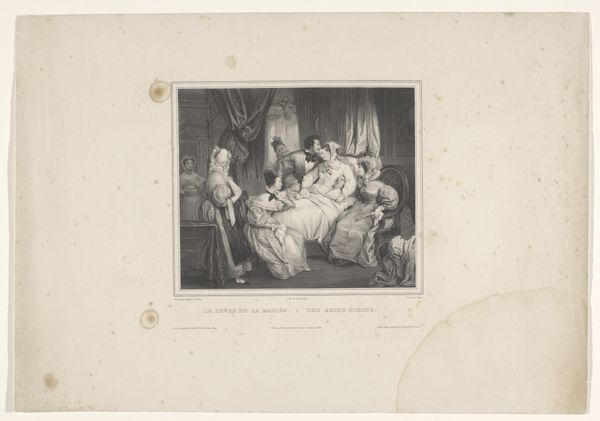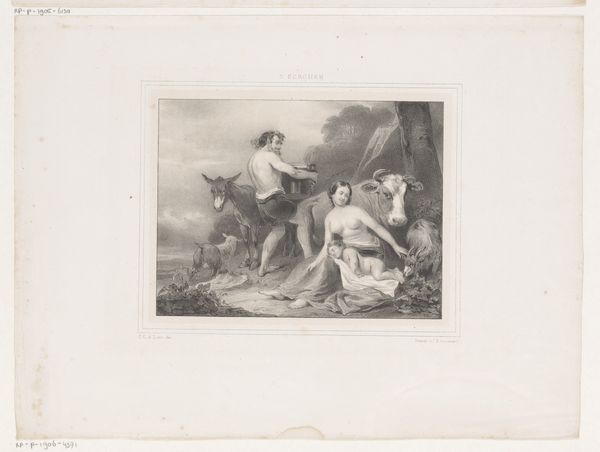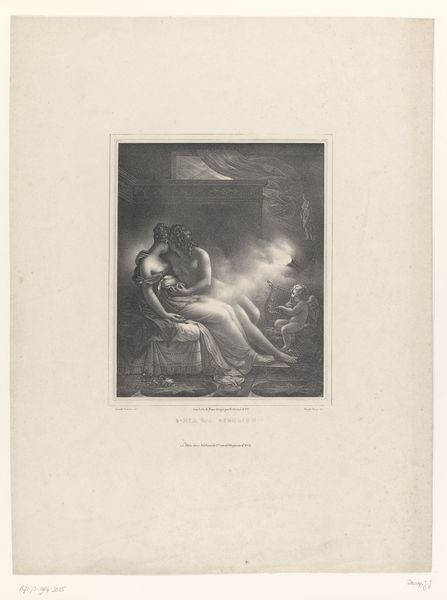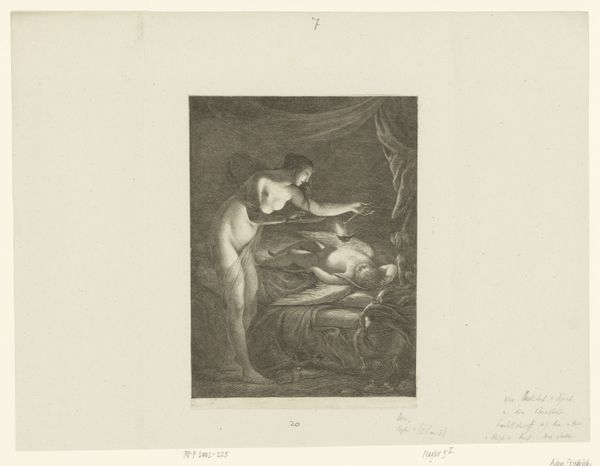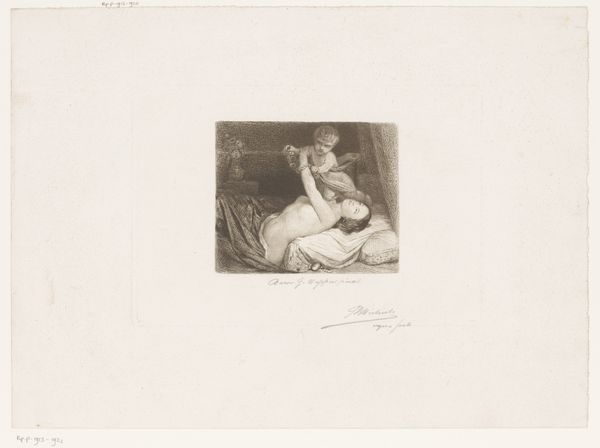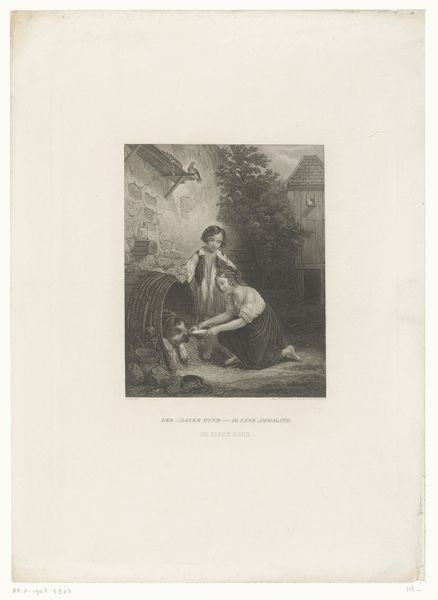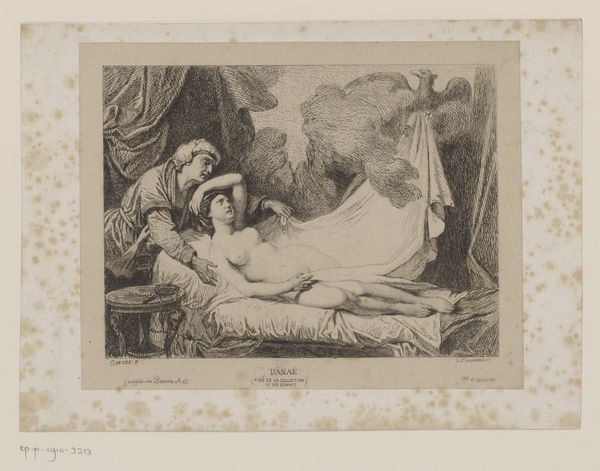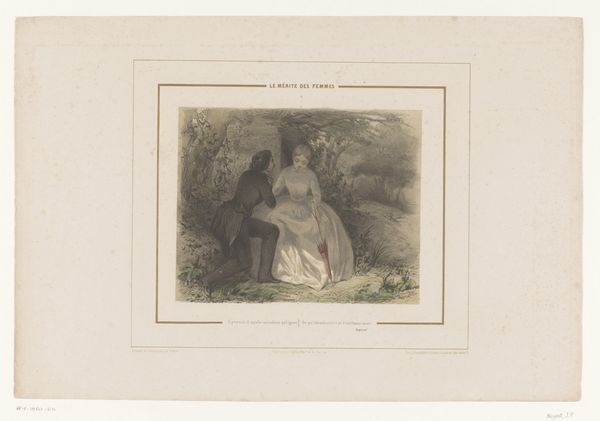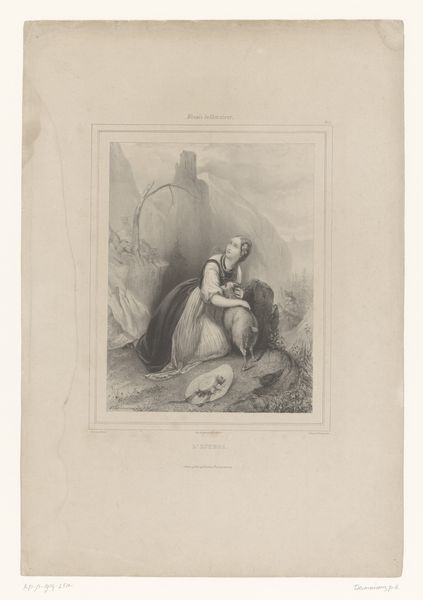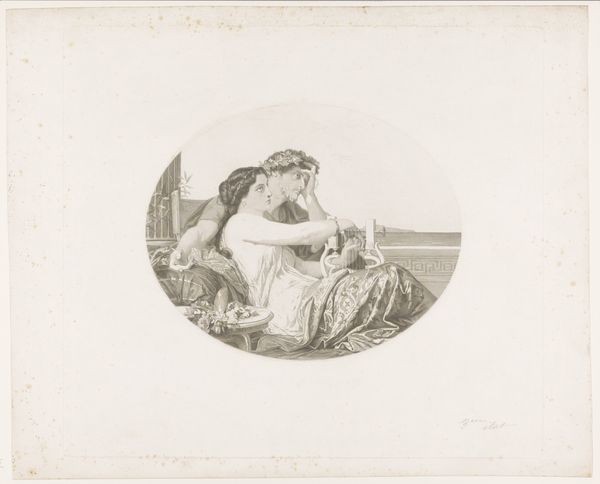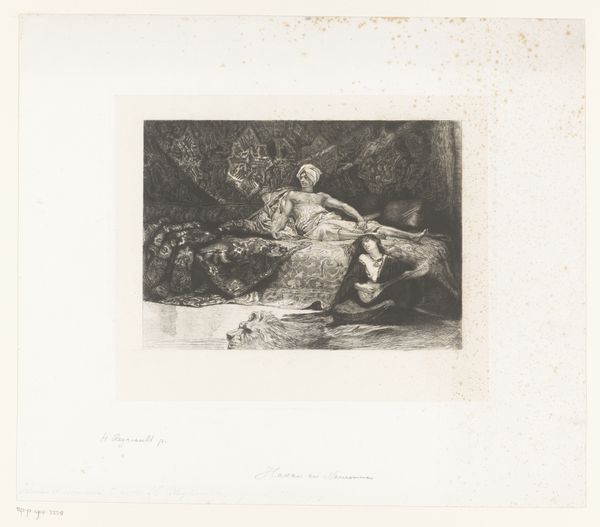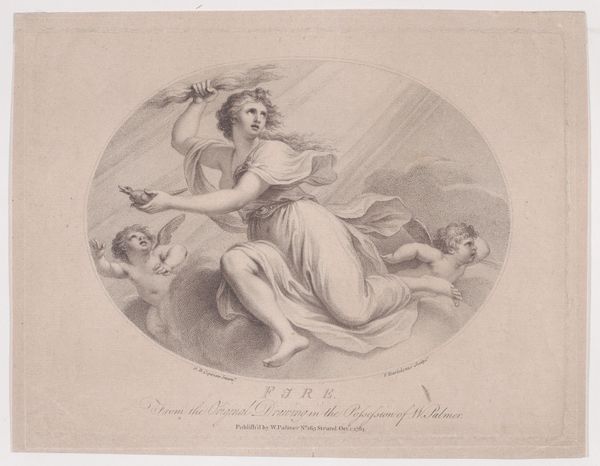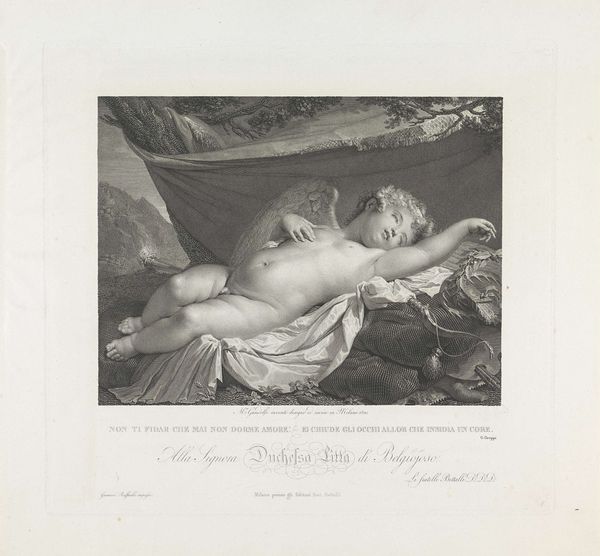
engraving
#
romanticism
#
orientalism
#
genre-painting
#
history-painting
#
nude
#
engraving
Dimensions: height 398 mm, width 567 mm
Copyright: Rijks Museum: Open Domain
Curator: Joseph Félon created this engraving, titled "Odalisk krijgt koelte toegewuifd onder een palmboom," sometime between 1850 and 1851. Editor: The texture seems surprisingly smooth considering its age and medium. There’s a sensual quality, an idealized languor that I find intriguing, though also slightly unsettling given its colonial implications. Curator: Yes, that tension is palpable. The figure of the Odalisque has become a powerful, loaded symbol. There's a visual lineage from Ingres to Matisse, a perpetuation of this exoticized, often objectified female form. Consider how this image draws upon and reinforces notions of the "Orient" as a space of leisure and luxury, available for Western consumption. Editor: It is telling how the scene evokes the harem fantasy of passive sensuality and the almost theatrical presentation of the "other" reinforces orientalist stereotypes. But where is the element of truth behind the layers of interpretation, and how is this reflected in present times? The woman fanning the Odalisk, in this moment of intimacy, also deserves consideration beyond the surface. Curator: Right. There's an interplay here between visibility and invisibility. We see the Odalisk prominently displayed, but the attendant’s agency or perspective remain obscured. We have the symbol of palm trees overhead, indicating that her comfort and perhaps freedom relies on exotic tropes. As viewers, how are we implicated in this power dynamic? Do we participate in this act of observation and the potential dehumanization it can entail? Editor: Exactly! What appears exotic on the surface is underpinned by a complicated web of human relationships and a system of unequal social positions. I can’t help but consider how historical portrayals such as these inform contemporary conversations around power, representation, and the male gaze. Curator: It certainly begs for a reevaluation, inviting dialogue about these power structures. And perhaps revealing those symbolic traces of both individual narratives and larger systemic realities, too. Editor: It serves as a haunting reminder that how we visualize each other across cultural divides really matters and ripples forward, and what this exchange communicates can take on a life of its own.
Comments
No comments
Be the first to comment and join the conversation on the ultimate creative platform.
